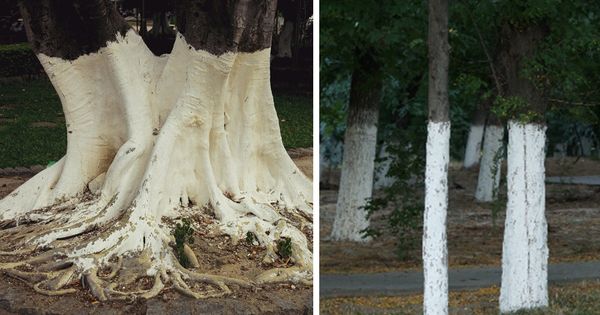
The internet has become an indispensable tool in our lives, providing us with knowledge and connecting us with friends and family like never before. It’s like having access to ten thousand libraries in just a few clicks. Gone are the days of searching through numerous books or consulting experts for answers to our questions. Today, the internet has an answer for almost anything you can think of.
At our site, we love exploring and explaining the mysteries of the world around us. We’ve covered topics such as the meaning behind a giant star on a barn or a man with a painted fingernail. We even looked into the phenomenon of square waves forming on the ocean’s surface near the shore. So, when we stumbled upon a peculiar picture online showing trees with their trunks painted white, we couldn’t resist delving into the subject.
It turns out, there’s a lot happening in the world of trees. Last month, we uncovered the possible reasons behind the bent trees you might come across in the forest. We also discovered that paint splashed on a tree’s bark follows a color code that reveals information about the tree, such as its health or future. For instance, an orange dot indicates that the tree is earmarked for cutting down, while purple markings suggest the tree is on private land.
But what about trees that are painted white? To be honest, we had no idea before we decided to do some research (thanks to the internet). As it turns out, trees are painted white in winter to protect them from sunburn. Yes, you read that right—trees can get sunburned too!
Being outdoor creatures, trees are exposed to temperature fluctuations. The sun can heat up a tree’s bark during the day, causing it to expand. When the temperature drops at night, the bark cools down and contracts rapidly. These changes can lead to the bark splitting and damaging the tree’s trunk.
That’s where the white paint comes in. When a layer of white paint is applied to a tree’s trunk, it reflects the sun’s rays, preventing the trunk from overheating during the day. Who would have thought? Not us! Did you know about this before? Let us know in the comments.






